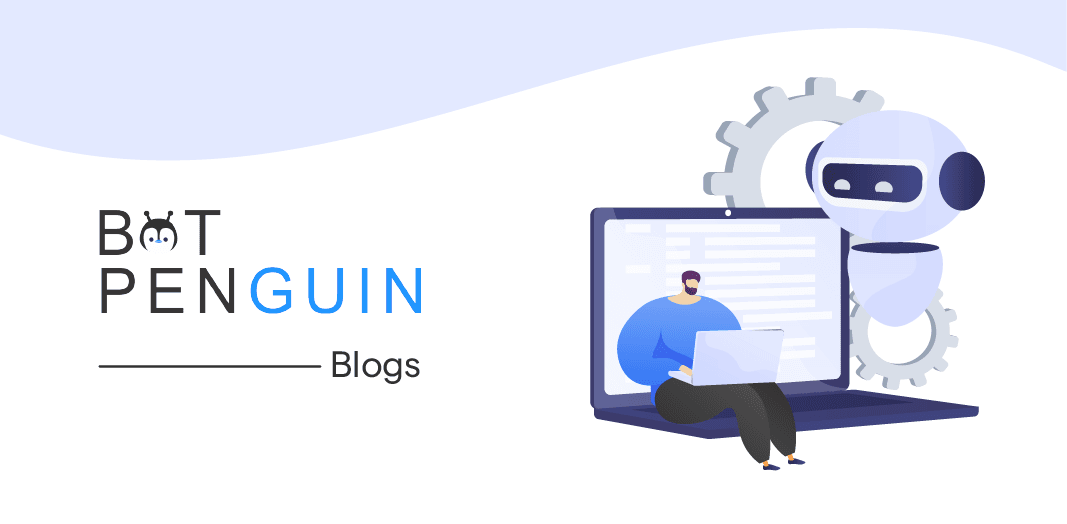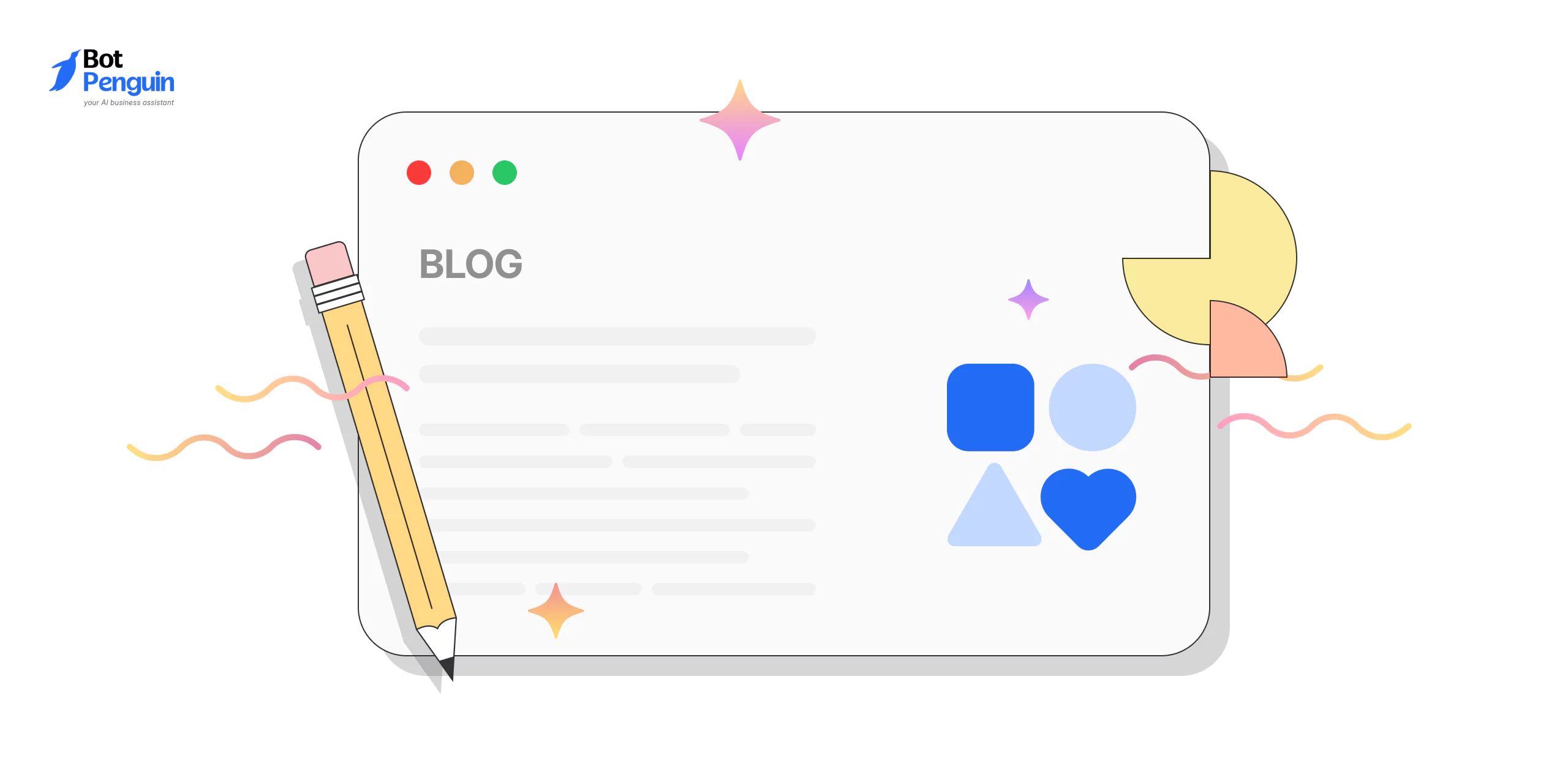Introduction
There are two methods businesses can use to unlock the full potential of Large Language Models (LLMs). They are the Retrieval-Augmented Generation (RAG) and fine-tuning. Both these methods operate by customizing the LLM for specific use cases.
However, the methodologies that these two follow are completely different. This is where the Retrieval Augmented Generation vs fine tuning debate comes in. Both strategies enhance your language model’s performance, but they do so through fundamentally different approaches.
In this guide, we will break down Rag vs fine tuning approaches, their trade-offs, and how to choose the one that truly aligns with your goals.
Understanding RAG and Fine-Tuning
Deciding between RAG vs fine tuning is like choosing two different paths to achieve the same goal: optimizing your LLM.
Each has unique strengths and caters to specific needs. Understanding their mechanics and applications is crucial to making an informed decision. Let us break down these strategies step by step.
What is RAG?
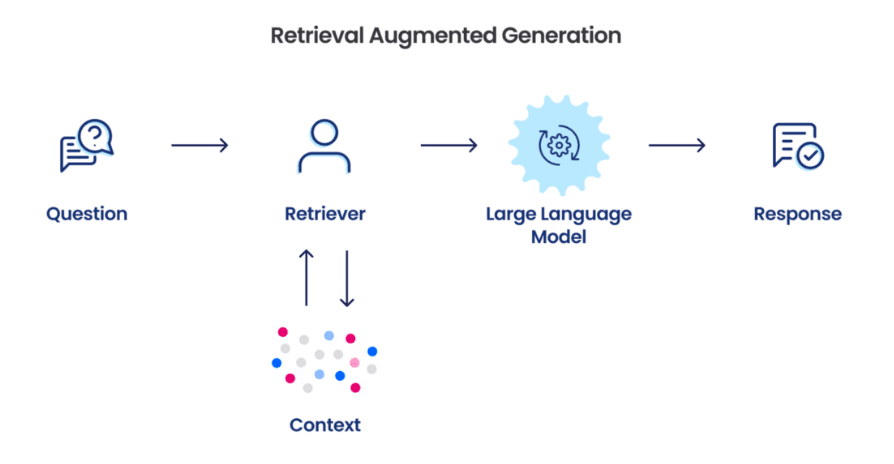
Retrieval-augmented generation (RAG) combines the power of retrieval systems with generative models. Instead of relying solely on the model's internal knowledge, RAG fetches relevant context from external databases in real-time.
A retrieval system scans external data sources, such as documents or databases, to find relevant information. This retrieved data is then fed into a generative model, which uses it to create responses.
This dynamic approach enables models to stay updated without retraining. It is especially effective for cases where the knowledge base frequently changes or must remain comprehensive. Some common applications of RAG include:
- Customer support systems that need up-to-date FAQs.
- Content generators, sourcing information from large document libraries.
- AI systems, integrating real-time updates for accurate decision-making.
This makes RAG a powerful alternative to fine-tuning, especially when flexibility and real-time knowledge retrieval are essential.
When comparing RAG vs fine tuning, the choice ultimately depends on whether you prioritize adaptability with external data or deeper customization through model training.
What is Fine-Tuning?
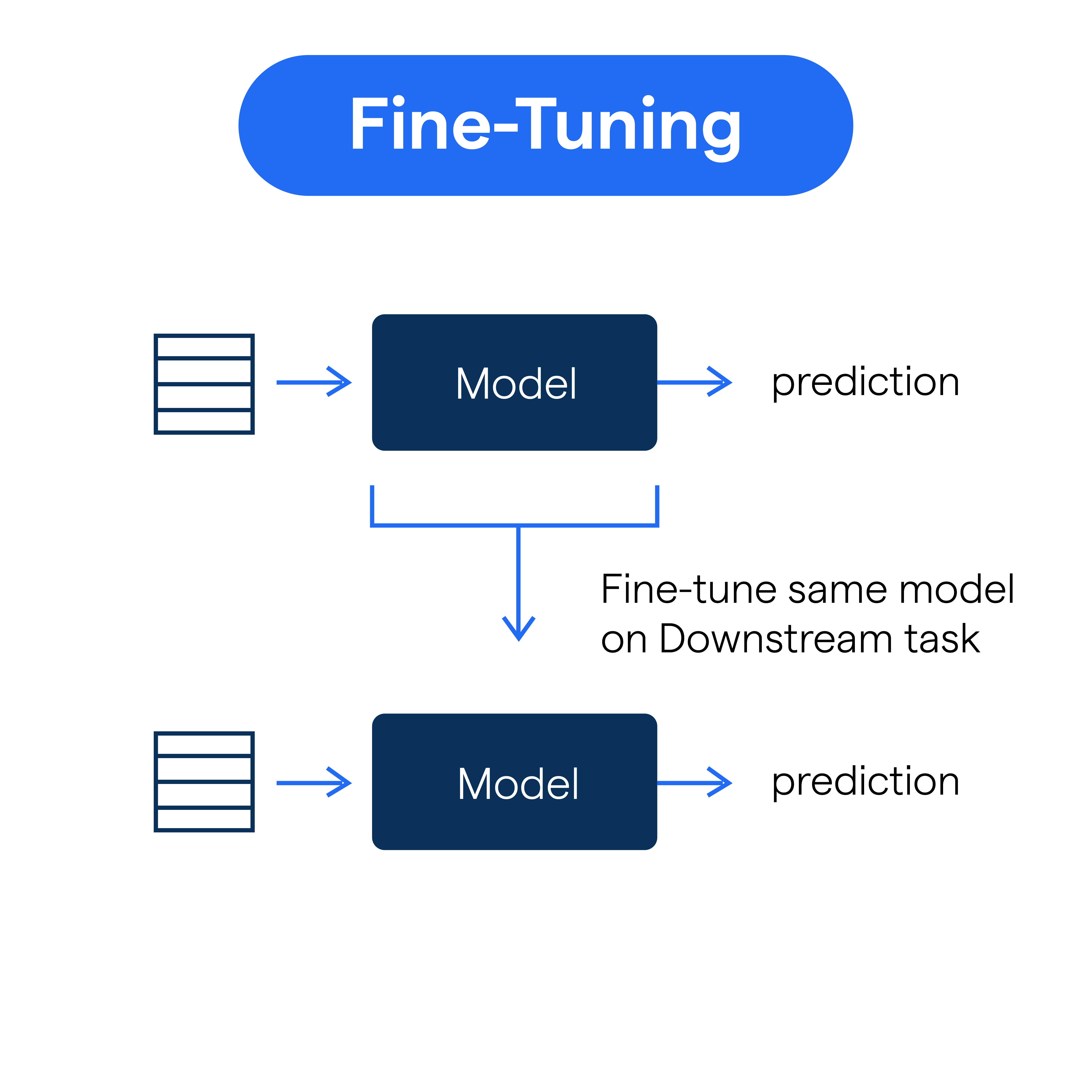
Fine-tuning adjusts the weights of a pre-trained model to specialize it for a specific task or domain. Unlike RAG, which fetches external information, fine-tuning modifies the model itself.
It starts with a pre-trained model, often containing billions of parameters, which serves as the foundation. This model is then further trained using labeled data tailored to a specific task or domain, gradually refining its capabilities.
Through this process, the model learns new skills or enhances its performance within a focused context.
Some common applications of fine tuning include:
- Industry-specific AI, such as legal or medical document generation.
- Creating AI tools for specific creative tasks like scriptwriting.
- Improving conversational AI for niche contexts.
Fine-tuning excels in creating models with deeply specialized capabilities. It sacrifices generality for precision, making it ideal for use cases requiring nuanced outputs.
When comparing fine tune vs RAG, the decision depends on whether you need a model with in-depth expertise or one that dynamically retrieves external knowledge
Key Differences Between RAG and Fine-Tuning
When comparing RAG vs fine tuning, their differences go beyond surface-level mechanics.
These strategies approach optimization from fundamentally distinct angles, influencing their technical demands, scalability, and ideal use cases. Here is a closer look at how they stack up against each other.
Adaptability and Customization
In the RAG vs fine tuning comparison, the fundamental difference is real-time adaptability vs pre-trained customization.
Retrieval-augmented generation (RAG) connects to external databases in real-time, pulling relevant information as needed. In contrast, fine-tuning adjusts the internal weights of a model to specialize it for specific tasks or domains.
Cost and Computational Needs
When comparing RAG vs fine tuning, RAG is cost-effective for initial deployment since it avoids the need for extensive retraining. Instead, its reliance on external retrieval systems reduces computational demands.
Fine-tuning, however, involves high initial costs due to significant computational requirements, particularly for training large language models (LLMs).
Training Time
The training time difference between RAG vs fine tuning is significant. Fine-tuning requires long and computationally expensive training periods, especially for large, complex models.
RAG, by bypassing this training step, can be implemented faster.
Maintenance and Updates
In the RAG vs fine tuning debate, RAG simplifies updates by allowing changes to the external database, which instantly impacts the model’s output.
Fine-tuned models, however, must be retrained whenever new data needs to be incorporated, making the process slower and more resource-intensive.
Scalability
Scalability is another major differentiator in the RAG vs fine tuning comparison. RAG has a natural advantage in scalability. By accessing external databases, it can seamlessly handle large and ever-expanding datasets without overwhelming the model.
Fine-tuned models, in contrast, are limited by the dataset used during training. Expanding their scope would require additional data and retraining, increasing complexity.
Performance
The performance trade-offs between RAG vs fine tuning depend on the specific use case. Fine-tuned models produce highly accurate and context-aware responses, particularly in specialized domains.
For example, a fine-tuned legal assistant could draft precise contract clauses. RAG’s output quality, however, depends on the retrieval system's accuracy and the quality of the external data it accesses. If the external data is incomplete or irrelevant, the generated output suffers.
Both approaches have their strengths; RAG offers flexibility and real-time knowledge retrieval, while fine-tuning ensures deep specialization.
The right choice in the RAG vs fine tuning debate depends on whether you need a model that evolves dynamically or one that excels in a focused domain.
Use Case Scenarios
RAG and fine-tuning serve different operational goals. Choosing between RAG vs fine tuning often depends on whether your project requires handling dynamic or static data.
Dynamic Use Cases
RAG is ideal for environments where the knowledge base is constantly evolving. For instance, it is commonly used in FAQ bots, research tools, or AI assistants that need to pull live data from the web or other external repositories.
A customer service chatbot powered by RAG can quickly reflect updated policies or new product details without retraining.
Static Use Cases
Fine-tuning is better suited for tasks requiring consistency and deep contextual understanding.
Examples include personalized virtual assistants trained to understand specific client needs or systems designed to generate industry-specific content, such as medical or legal document drafting. Fine-tuned models deliver polished and precise outputs for niche requirements.
When evaluating fine tuning vs rag, the decision boils down to whether adaptability or accuracy is your priority.
When to Choose RAG?
Deciding between rag vs fine tuning involves carefully assessing the specific needs of your application.
Choosing Retrieval-Augmented Generation (RAG) is ideal when your application requires real-time updates, adaptability, and cost-effective solutions.
Unlike fine-tuned models, which rely on static, pre-trained knowledge, RAG dynamically retrieves information from external sources, ensuring the most up-to-date and relevant responses without the need for frequent retraining.
Let us break down when RAG is the best choice and why it excels.
Ideal Scenarios for Using RAG
In the RAG vs fine tuning debate, RAG is ideal for applications where the data or knowledge base changes frequently.
By retrieving and integrating external information in real-time, RAG ensures that AI models remain relevant and contextually aware without requiring expensive re-training cycles. A few examples include:
- Customer service systems: RAG-powered chatbots and FAQ tools pull live information from product databases, support documentation, and policy updates, ensuring customers receive real-time and accurate answers.
- Content creation tools: RAG-powered applications can generate outputs based on recent trends or current events, such as news summaries or market reports.
- Research tools: Academic and technical research assistants use RAG to pull accurate references and up-to-date studies, making them more effective in knowledge-intensive tasks.
When comparing fine tuning vs rag, RAG’s ability to integrate fresh data in real-time makes it better suited for dynamic applications.
Cost-Conscious Solutions
In RAG vs fine tuning, RAG is a practical solution for organizations looking to optimize performance without breaking the bank.
Unlike fine-tuning, which requires significant computational resources and labeled data, RAG bypasses this process by relying on external data retrieval.
The lower initial setup and maintenance costs make it accessible for businesses operating on tight budgets.
Let us understand this with some examples.
- An e-commerce chatbot using RAG can automatically reflect changes in the product catalog or pricing, avoiding the time and expense of retraining a fine-tuned model for such updates.
- A healthcare assistant can quickly access the latest medical guidelines or drug information, ensuring accurate and up-to-date responses without requiring costly retraining cycles.
In the rag vs fine tuning debate, RAG provides an affordable yet effective solution for many use cases. Platforms like BotPenguin, an AI agent and chatbot maker, help businesses provide real-time responses while minimizing costs.
By integrating external data sources, these chatbots stay updated without requiring frequent model retraining, making them a cost-effective choice for dynamic environments.
Pros
- RAG is highly adaptable, allowing models to respond to evolving knowledge bases without significant reconfiguration.
- By using external retrieval systems, RAG reduces the need for computationally expensive retraining processes.
- RAG can easily integrate with large datasets or external sources, scaling to meet the needs of complex applications.
Cons
- The success of a RAG system hinges on the quality, availability, and reliability of the external databases it relies on. If these data sources are incomplete or inaccurate, the output quality suffers.
- Fetching information in real-time can cause delays, particularly for applications that demand instant responses, such as live customer support or interactive assistants.
While RAG offers flexibility and scalability, its reliance on external data can introduce challenges like retrieval delays and data quality issues. Understanding these pros and cons helps in making an informed decision when choosing between RAG vs fine tuning for your specific needs.
When to Choose Fine-Tuning?
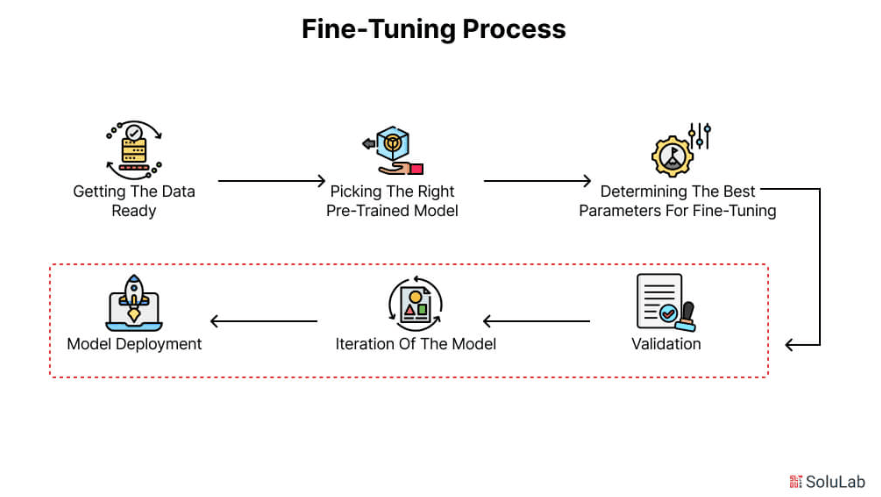
Choosing between rag vs fine tuning depends heavily on your project’s requirements. Fine-tuning is the preferred approach when precision, consistency, and domain-specific expertise are essential.
Unlike retrieval-based methods, which rely on external sources, fine-tuning adapts a pre-trained model to a specific dataset, making it highly optimized for specialized applications that require accuracy and deep contextual understanding.
Ideal Scenarios for Using Fine-Tuning
Fine-tuning is the go-to solution for tasks that demand precise, task-specific optimization. By training a pre-existing model on domain-specific data, fine-tuning ensures outputs are highly tailored, reliable, and aligned with industry-specific needs.
When comparing RAG vs fine tuning, fine-tuning is the better choice for scenarios requiring deep specialization rather than dynamic knowledge retrieval. A few examples include:
Highly Specialized Applications
Fine-tuning is ideal for generating complex, domain-specific content where pre-trained LLMs lack the necessary depth. For instance:
- A medical AI trained on clinical datasets can analyze patient records and generate diagnoses with greater accuracy than a general model.
- Legal AI can draft contracts while ensuring compliance with jurisdiction-specific legal frameworks.
- Finance-specific models can analyze market trends and generate insights aligned with financial regulations.
Creative or Personalized Outputs
Fine-tuned models are extensively used in creative industries to generate customized, high-quality content. These applications include:
- Screenplay or novel writing, where AI-generated text must adhere to a specific tone, style, or character voice.
- Music and art generation, where models are trained to create custom outputs that align with unique aesthetics.
Offline or Static Data Requirements
In environments where external data access is limited, fine-tuning ensures AI models remain functional without internet connectivity. Examples include:
- Autonomous systems operating in remote locations.
- On-premise AI assistants for businesses that require strict data security without real-time API dependencies.
When comparing fine tuning vs rag, fine-tuning stands out in use cases where specialization and reliability are key.
Long-Term Value and Performance
While fine-tuning requires a higher initial investment in training and computational resources, it offers long-term benefits in performance and efficiency.
Once fine-tuned, the model can operate independently without relying on external databases, ensuring fast and consistent responses.
Here are some examples where fine-tuning provides lasting value:
- Large enterprises benefit from fine-tuned models that align with company-specific terminology, policies, and workflows, reducing the need for external validation.
- In regulated industries like finance or healthcare, fine-tuning ensures that AI outputs remain compliant with strict guidelines, as the model is trained directly on approved, vetted data.
In the RAG vs fine tuning debate, fine-tuning proves to be a worthwhile investment when long-term accuracy, security, and specialized performance are the top priorities.
Pros
- By tailoring the model to a particular domain, fine-tuning ensures it delivers outputs that are highly accurate and relevant to the task at hand. This makes it invaluable in sectors like healthcare, where precision is non-negotiable.
- A fine-tuned model trained on specialized datasets provides outputs with greater contextual understanding and relevance compared to a general-purpose system.
Cons
- Fine-tuning requires substantial computational resources and high-quality, domain-specific datasets. This can make the process expensive and time-intensive, especially for large-scale applications.
- Fine-tuned models are static and don’t easily incorporate new information. Unlike RAG, which can adapt by updating its data sources, fine-tuned models require retraining to reflect changes, making them less flexible for dynamic use cases.
For these reasons, fine-tuning is often favored in the rag vs fine tuning discussion for static or high-stakes applications.
Decision-Making Framework in the RAG vs Fine Tuning Debate
Choosing between rag vs fine tuning can feel overwhelming, but it doesn’t have to be.
By systematically analyzing your project’s requirements, you can identify which strategy aligns best with your goals. Use this step-by-step framework to simplify the decision-making process.
- Define your use case: Start by clarifying your project’s primary objective. Is it dynamic, requiring real-time updates, or static, focused on domain-specific accuracy?
For example, if you need a chatbot that pulls current data, RAG is ideal. If you are building a specialized medical assistant, fine-tuning is a better fit.
- Assess data availability and dynamics: Evaluate the type and accessibility of your data. For rapidly changing data, retrieval augmented generation vs fine tuning decisions often favor RAG, which relies on external sources. For applications with a fixed dataset, fine-tuning offers the depth and precision you need.
- Consider budget and resource constraints: Fine-tuning involves higher training costs and resource requirements, making it less feasible for budget-conscious projects.
RAG, with its lower initial costs, is a more economical solution for projects with financial limitations.
- Evaluate long-term maintenance needs: Determine how often your system will require updates. Fine-tuned models demand retraining for significant changes, while RAG adapts easily by updating its external database. If scalability and minimal maintenance are priorities, RAG is more suitable.
By carefully assessing your project’s needs, data dynamics, budget, and maintenance requirements, you can confidently choose the best approach.
Whether prioritizing adaptability with RAG or precision with fine-tuning, selecting the right strategy ensures optimal performance and efficiency. In the RAG vs fine tuning debate, the key lies in aligning the method with your specific goals.
Quick Decision Tree for Clarity in the RAG vs Fine Tuning Approach
You can use this quick decision tree to navigate the RAG vs fine tuning dilemma. By answering these key questions, you can quickly determine which approach best suits your needs, balancing efficiency, scalability, and cost-effectiveness.
- Is your use case dynamic and requires real-time updates? If yes, choose RAG. Retrieval-augmented generation vs fine-tuning decisions favor RAG when applications need to pull live, external data for accurate, up-to-date responses.
- Do you need highly specialized, task-specific outputs? Then fine-tuning is the best option. Fine tune vs RAG choices lean toward fine-tuning when precision, deep contextual knowledge, and domain-specific accuracy are critical.
- Are you working within tight budget constraints? RAG offers cost advantages. Since RAG retrieves external information without continuous retraining, it reduces long-term computational costs.
In the fine-tune vs RAG debate, RAG is the more cost-effective option, as fine-tuned models require frequent updates and higher infrastructure investment.
- Will the data change frequently or require frequent updates? RAG handles dynamic updates better. LLM RAG vs fine-tuning shows that fine-tuned models are static, meaning they must be retrained to incorporate new knowledge, while RAG can integrate updates in real-time.
When deciding on Llm Rag Vs Fine Tuning, this framework ensures clarity. Use it to balance priorities like cost, adaptability, and task-specific accuracy.
Whether it is fine tuning vs rag or rag vs finetuning, align your choice with your project’s unique requirements for optimal results.
Conclusion
Deciding between RAG vs. fine-tuning depends on your specific business needs and AI deployment goals. Many organizations struggle with implementing AI solutions effectively due to high development costs, technical complexities, and the need for continuous updates.
Businesses often face a trade-off between maintaining real-time adaptability (RAG) and achieving domain-specific accuracy (fine-tuning), both of which require careful planning and infrastructure.
For businesses seeking a seamless way to implement AI without coding complexities, BotPenguin is an excellent solution. It is an AI agent, and a no-code AI chatbot platform that enables organizations to create intelligent, responsive chatbots without the need for manual fine-tuning or complex retrieval pipelines.
Whether for customer service, lead generation, or workflow automation, BotPenguin simplifies AI adoption, making it accessible to startups, enterprises, and non-technical users alike.
Ultimately, both RAG and fine-tuning have their advantages, but the right choice depends on your use case, budget, and technical expertise. With solutions like BotPenguin, businesses can harness AI efficiently without the overhead of maintaining complex AI models.
Frequently Asked Questions (FAQs)
What is the cost difference between RAG and fine tuning?
In the RAG vs fine tuning comparison, RAG typically has lower initial deployment costs as it avoids retraining. Fine-tuning demands higher computational resources and training costs, making it more expensive upfront but offering higher precision for specialized tasks.
Can RAG and fine-tuning be combined?
Yes, the RAG vs fine tuning approach doesn’t have to be an either-or choice. Fine-tuning enhances task-specific accuracy, while RAG ensures real-time adaptability by integrating dynamic external knowledge.
Combining both can create a powerful hybrid model suited for complex and versatile use cases.
Which option is better for small businesses in the RAG vs fine tuning comparison?
For small businesses, RAG is generally the better choice due to its lower costs and adaptability.
In the RAG vs fine tuning comparison, RAG provides real-time knowledge updates without requiring extensive retraining, making it a more practical and budget-friendly solution.
Which approach is easier to maintain in the RAG vs fine tuning discussion?
RAG is easier to maintain since updates can be made by modifying external data sources. In contrast, fine-tuned models require complete retraining when new information needs to be incorporated, making long-term maintenance more resource-intensive.
Which approach in RAG vs fine tuning is more suitable for customer service chatbots?
RAG is generally the better choice for customer service chatbots, as it can retrieve the latest policies, FAQs, and product details in real time without requiring frequent model retraining.
However, in the RAG vs fine tuning discussion, fine-tuning may be beneficial for creating highly personalized chatbot interactions that require a deep understanding of specific user behaviors and preferences.

